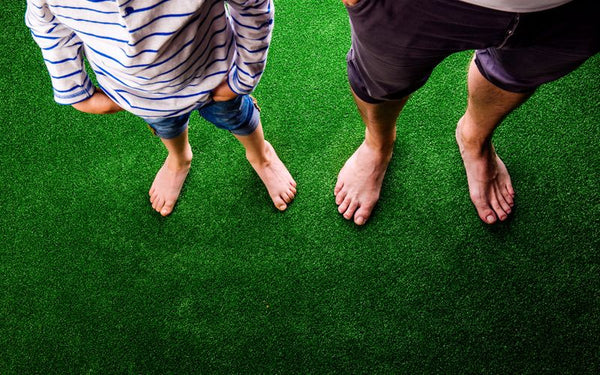
So you’re new to the world of synthetic turf. You figured that it would be beneficial for your lawn if it had grass that demands no water and purchased some immediately. Now you ask yourself: how do I install this?
Don’t worry; we’ve got you. At the end of this article, you should be able to determine the necessary turf installation process for your residential synthetic turf.
- Before the turf preparation, prepare the necessary equipment. For this activity, you’ll need: a shovel, a wheelbarrow, a pair of gloves, organic waste bins, a rake, a plate compactor, and a utility knife. If available, you can also use a sod cutter. (Note: Sod cutters can be rented from local tool rental companies and goods stores.)
- After laying turf preparation, remove the existing grass. In doing so, we recommend that you use a sod cutter to cut the grass evenly and to avoid damaging water lines and irrigation.If you have a sprinkler system, we recommend that you pull the exposed sprinkler/s to even the area.
- The best way to lay turf is to excavate with a minimum depth of two inches. If your turf will be coming in contact with pets, a minimum depth of two inches will provide good drainage.
- If available, install a bendaboard border. This will prevent your pets from pulling up your lawn.
- Add a quarter-inch of self-compacting gravel to avoid making your synthetic turf look fake.
- After preparing ground for turf, rake and compact the gravel.We recommend that you use a 36” aluminum grading rake which has teeth on one side and a flat grading blade on the other.
- Use a plate compactor (which you can also rent) to wet the area moderately.Wet it twice.
- The turf installation process also includes leveling the surface again with a plate compactor. Use your rake or your broom to remove the excess material on the edges of the plate compactor.
- Place your synthetic turf.
- Cut your synthetic turf in the desired shape. Using a utility knife, cut along the edges of your synthetic turf.
- Seam to complete the turf installation process. A quick search on the internet will provide you with two options: you can either glue your seam or use staples or nails. We recommend that you glue your seam to prevent having nails on your residential lawn.
- Wait until your seam is cured so you can remove the bags of sand. (Note: It may cure the next day.)
- This is the final step for a complete turf installation process. In doing so, you can use silica sand, Durafill, crumb rubber, and deodorizing infills (for pets).You can use a spreader to even its distribution. This will help keep your blade vertical and your turf looking realistic.You can now enjoy your newly-installed residential synthetic turf.
Always follow these simple laying turf tips in order to maximize your purchase of one.
As always, you should check out the best turf guard here even if you don’t have your turf yet.









